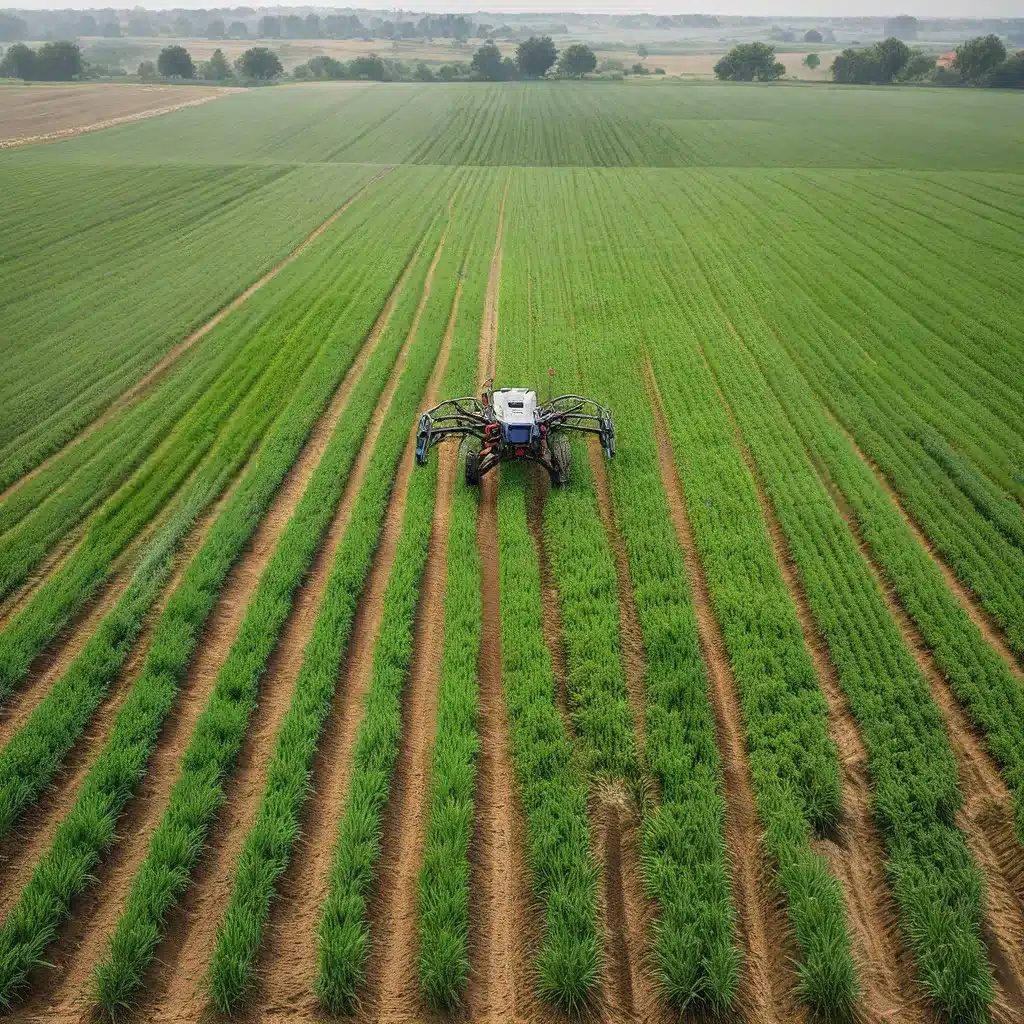
In the rapidly evolving landscape of sensor networks and the Internet of Things (IoT), the field of precision agriculture has emerged as a prime beneficiary of these advancements. Distributed sensing systems, which leverage a network of interconnected sensors, are transforming the way farmers and agronomists approach resource management, crop optimization, and sustainable agricultural practices.
The Significance of Distributed Sensing in Precision Agriculture
Precision agriculture, also known as site-specific crop management, is a holistic approach that leverages advanced technologies to enhance the efficiency and sustainability of agricultural operations. Distributed sensing plays a crucial role in this paradigm shift, enabling farmers to gather granular, real-time data on various environmental factors and crop conditions.
Sensor networks deployed across farmlands can monitor soil moisture, nutrient levels, weather patterns, pest infestations, and other variables that directly impact crop growth and yield. By analyzing this data, farmers can make more informed decisions regarding irrigation, fertilization, and pest control, optimizing resource utilization and minimizing waste.
Moreover, the integration of IoT technologies with distributed sensing systems allows for seamless data aggregation, storage, and real-time analysis. This information can be accessed remotely, enabling farmers to monitor and manage their operations from anywhere, promoting greater efficiency and responsiveness in their decision-making processes.
Designing Robust Sensor Network Architectures
Effectively deploying a distributed sensing system for precision agriculture requires careful consideration of the network architecture. Sensor network topologies can vary, ranging from centralized to decentralized designs, each with its own advantages and tradeoffs.
Centralized Architectures: In this approach, a central control unit or gateway collects data from all the sensors in the network and processes the information. This model often provides greater data security and control, but may suffer from scalability issues and single points of failure.
Decentralized Architectures: Alternatively, decentralized or mesh network topologies distribute the processing and decision-making across multiple nodes, enhancing resilience and adaptability. However, these designs may face challenges in ensuring data integrity and network synchronization.
Ultimately, the choice of network architecture should be tailored to the specific needs and constraints of the agricultural operation, considering factors such as the size of the farmland, the types of crops, environmental conditions, and available resources.
Ensuring Robust Security and Privacy in Sensor Networks
As sensor networks become increasingly ubiquitous in precision agriculture, the need for robust security and privacy measures cannot be overstated. Cybersecurity threats, such as data breaches, unauthorized access, and network disruptions, can have devastating consequences for farmers, jeopardizing their operations, crop yields, and sensitive information.
Encryption protocols, access control mechanisms, and intrusion detection systems are critical components in safeguarding sensor networks from malicious actors. Additionally, secure data storage and transmission practices, along with end-to-end encryption, can help protect sensitive agricultural data and ensure the privacy of farm operations.
Educating farmers and agricultural professionals on cybersecurity best practices is also essential, empowering them to make informed decisions and proactively mitigate potential threats to their sensor networks.
Optimizing Energy Efficiency in Sensor Networks
One of the key challenges in deploying distributed sensing systems for precision agriculture is energy management. Sensor nodes are often battery-powered or rely on limited energy sources, and their continuous operation is crucial for uninterrupted data collection and real-time decision-making.
Energy-efficient sensor network design strategies, such as duty cycling, data compression, and renewable energy integration, can significantly improve the longevity and sustainability of these systems. By minimizing energy consumption, farmers can reduce maintenance costs, ensure reliable data collection, and contribute to the overall environmental sustainability of their operations.
Advances in battery technology, solar-powered sensor nodes, and energy harvesting techniques further enhance the energy efficiency and self-sufficiency of distributed sensing systems, making them more practical and viable for large-scale agricultural applications.
Embracing the Future of Precision Agriculture through Sensor Networks
The integration of distributed sensing and IoT technologies in precision agriculture has the potential to revolutionize the way we approach sustainable and efficient food production. By leveraging these advancements, farmers can make more informed decisions, optimize resource utilization, and enhance the overall profitability and environmental resilience of their operations.
As the sensor network and IoT landscape continues to evolve, the opportunities for precision agriculture to thrive are vast. Ongoing research, innovation, and collaboration between stakeholders, including farmers, researchers, and technology providers, will be crucial in realizing the full potential of this transformative field.
Ultimately, the distributed sensing solutions being developed for precision agriculture are not just about improving yields or reducing costs; they represent a fundamental shift towards a more data-driven, sustainable, and resilient agricultural future. By embracing these advancements, we can work towards feeding a growing global population while preserving the delicate balance of our natural resources.
Visit sensor-networks.org to explore more about the latest innovations and insights in the world of sensor networks and IoT.